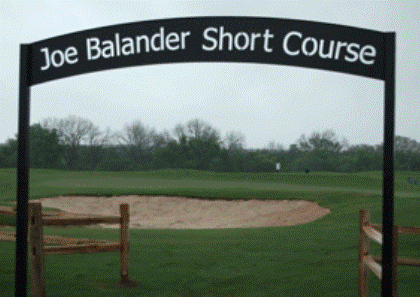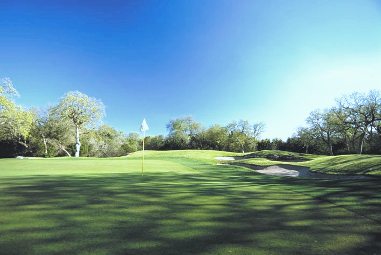Detailed description of Onion Creek Club, North Course
Onion Creek Club is a private 27 hole golf facility located in Austin, Texas.
The first 18 holes opened for play in 1975 and were designed by three-time Masters Champion, Jimmy Demaret. In 1996, Ben Crenshaw and Bill Coore designed nine new holes blended with Demaret's original design, creating a 27-hole golf course that can be played as three different somewhat confusing 18-hole routing combinations, known somewhat confusingly as The Original Course, The North Course, and The Original North Course.
Because of its relative flatness and overall beauty, Demaret had little trouble convincing some of golf's most legendary hitters to come to Austin and play the course. After being open for just a couple of years, the course played host to a tournament called the Legends of Golf that featured tournament professionals 50 years of age and older like Demaret, Sam Snead, Billy Casper, and others. This tournament, was held at Onion Creek for the next 11 years and become known as the "Birthplace of the Senior PGA Tour." The Legends of Golf was held at Onion Creek from 1978-1989. Professional Golf reappeared in Austin at Onion Creek Club hosting The Harvey Pennick Invitation, an LPGA Tour Event from 1999-2001.
Although water can make for many tough decisions throughout the 27 holes, so can the bunkers, which are placed quite liberally throughout the course. The location of the traps, both in the fairway and greenside, as well as their design can add a few numbers to your final tally. On several of the greenside bunkers, the front walls are at least four-feet tall.
Length can also be a factor on the Original Course, which measures 6,527 yards and is a par 70, especially on the 601-yard, par-5, No. 7. All 601 yards have water in play with Onion Creek running along the right. The presence of the creek is magnified as the hole is a dogleg left that takes the entire yardage to complete the dogleg. Tall oak trees to the right and left force you to keep it in the fairway if you are to have any chance of par.
The water, bunkers, and length as well as all the other design features at Onion Creek are in place to provide a challenge, but to also keep it interesting. On the back nine of the Original Course, Onion Creek factors into shot-making decisions on several holes, but not nearly as much as the preceding nine. On the par-4, No. 12 - the signature hole - looking out over the narrow fairway some 50-plus feet below, water can be seen to the right. It also appears on No. 16 as it runs the length of the hole down the right side.
For the new nine of the North Course, the design is relatively flat, with a few elevations and water on a select few holes. Like the Original Course, bunkers are prevalent and deep.
Guest (cart included), played on Monday, May 2008 at 8am
Very challenging layout, definately a position course. Greens run between 11-13 on stimp, you want to be below the hole as much as possible. Greens in regulation does not guarantee a par. It is very easy to 3 putt or worse if out of position on the green in relation to hole placement. Birdies can be had easily on most par 5-s and some par 4-s but double and triple bogies are lurking when a bad shot is played. Getting off the tee is crucial for a mid to long iron approach, having trouble of the tee box can lead to a score in the high 80-s to high 90-s depending on the skill level of the golfer.
Latest Golf Course Reviews
-
1
by Brian Clark 2023-10-08
-
2
by Brian Clark 2023-10-08
-
3
by Brian Clark 2023-10-08
-
4
by soundhar G 2023-10-07
-
5
by Brian Clark 2023-10-05
-
6
by Brian Clark 2023-10-05












Do Not Recall (cart included), played on Sunday, August 2012 at 8am
Ben Crenshaw and Bill Coore did a mostly credible job of weaving new holes into the Jimmy Demaret gem and giving it a good Onion Creek feel; two or three of the holes are unremarkable, but that's a minor quibble. Crenshaw/Coore seem to favor big, challenging greens; overall length SEEMS challenging but is mostly managable. Transistioning back to the Original layout for the final few holes is seamless and welcomed.